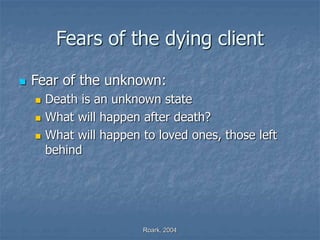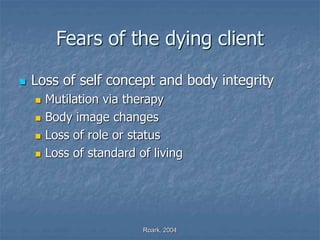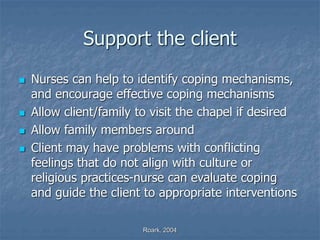The document discusses Kubler-Ross's five stages of grief (denial, anger, bargaining, depression, acceptance) and common fears of dying patients such as fear of loneliness, sorrow, the unknown, loss of control, and suffering/pain. It also addresses supporting grieving individuals and families, nursing care for the dying patient and after death, and how cultural backgrounds can impact beliefs about death.































